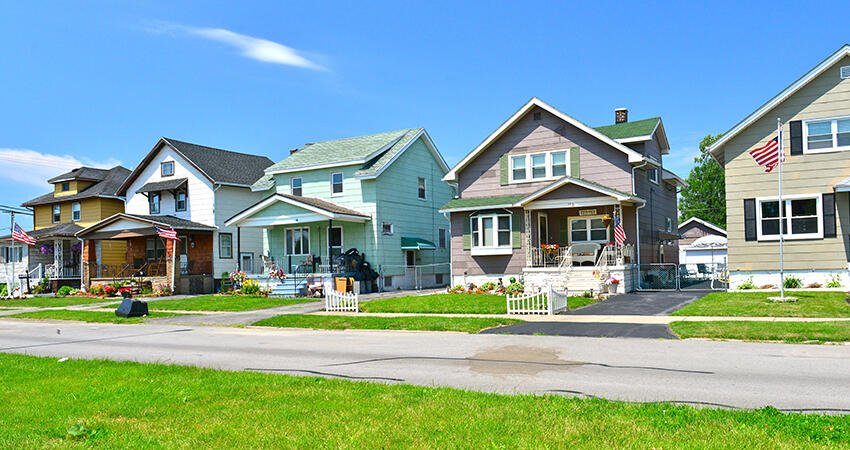
(Richard Cavalleri/Shutterstock)
Pandemic-Era Supports Offer Three Lessons for Supporting Today’s Struggling Renters
It finally seems as though the COVID-19 health crisis is winding down; the national emergency order will likely end in May (PDF), and other pandemic-era policies are slowly ending across the country.
However, the pandemic’s economic toll on renter households isn’t close to ending. For renters, the nearly $47 billion in emergency rental assistance Congress authorized at the end of 2020 and early 2021 is almost fully spent, and most temporary tenant protections have expired. Although no longer exacerbated by the national health emergency, renters today face a tightening market, low supply of affordable housing, and rising rental costs. Recent analysis shows that housing cost burdens for renters hit a historic high in 2021, with fully one-third of renter households spending 50 percent of their income on rent.
Because continued support is needed to stabilize renters in today’s housing market, policymakers and practitioners can look to innovative policies and programs implemented during the pandemic. Urban studied implementation of three innovative pandemic-era strategies: distributing emergency rental assistance (ERA), creating pretrial eviction diversion policies, and building community power in support of housing stabilization. We draw lessons learned from each to understand how we might improve the rental market for the most vulnerable households.
- Continue ERA and offer multiple tiers of rental support
We learned during the pandemic that rental assistance stabilizes not only renters but also their broader communities. While we don’t yet have rigorous evaluations of the ERA program, eviction filings in most communities stayed below historical levels during the time that ERA was widely available, even after the national eviction moratorium ended. Without emergency rental assistance, communities likely would have spent far more to address impacts to landlords and renters, including shelter stays, social services, lost wages and productivity, and impacts of far-ranging physical and emotional effects.
During the pandemic, some ERA administrators specialized to ensure the families most at risk of housing instability could receive assistance quickly. For example, the COVID-19 Eviction Defense Project (CEDP) in Denver, Colorado, created a revolving loan fund to provide financial assistance within days to households facing imminent eviction. This allowed other regional ERA providers to refer urgent cases to the CEDP. Creating an ecosystem of support for renters meant each local organization could lean on its strengths to keep renters stably housed.
- Expand innovative court practices
The pandemic and subsequent policies, such as national eviction moratoria and emergency rental assistance, pushed court administrators countrywide to create new pathways to resolve eviction cases. Courts experimented with new mediation and court diversion options—some of them mandatory, preeviction filing policies to help resolve landlord-tenant issues before they ever needed to go to court. Urban found that emergency financial assistance was especially helpful to bring both parties to the table and that early resolution could mean fewer turnover costs and missed rent for owners and avoidance of destabilizing and long-term effects of an eviction filing for the renter. In August 2022, the White House noted that eviction diversion policies had expanded to approximately 180 jurisdictions around the country, but there is room for many additional places to institute these policies.
- Ensure renters have a voice in the programs and policies that affect them
People most at risk of eviction are those least likely to have influence over local laws and practices that affect their housing stability. As housing stability has become increasingly challenging, many communities and community-based organizations are focusing on how building community power can improve housing stability through innovative strategies like community lawyering, changing the narrative through storytelling, and using arts to bring attention to issues that affect communities broadly. Community lawyering aims to link lawyers and political advocacy to broader community efforts, providing an opportunity to address the underlying structural issues and help renter communities harness the power of the law to foster more stable, supportive housing.
Stabilizing renters moving forward
The pandemic and subsequent relief efforts built an infrastructure of support for renter households. Within this infrastructure were sparks of innovation, such as eviction diversion in courts and new ways to reach the most at-risk renters. With ERA winding down and no prospects for its replacement, we risk losing both the infrastructure built as well as the important innovations spurred by the crisis. Even if federal policy action is unlikely, local policymakers, court administrators and advocates can keep innovating by continuing to support what has worked and by drawing lessons from other communities’ pandemic era rental practices.


